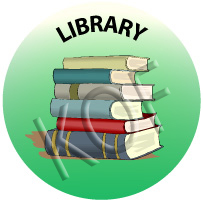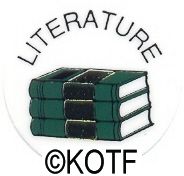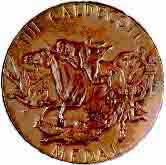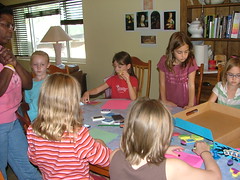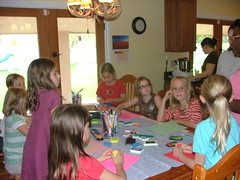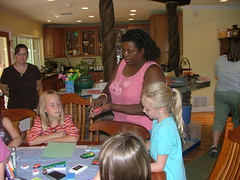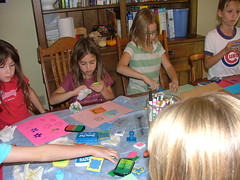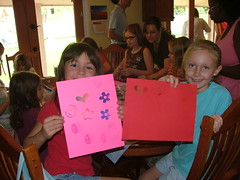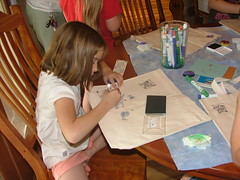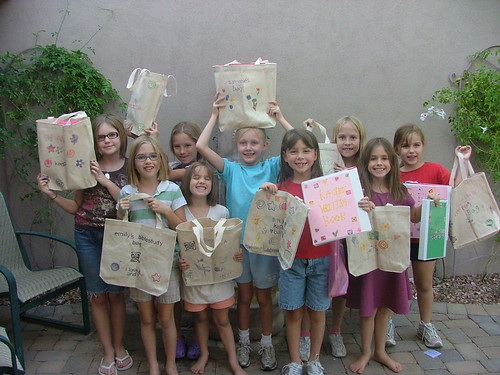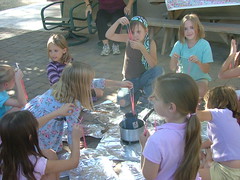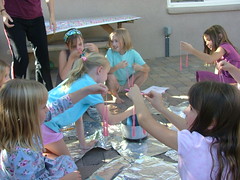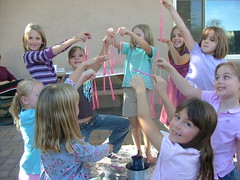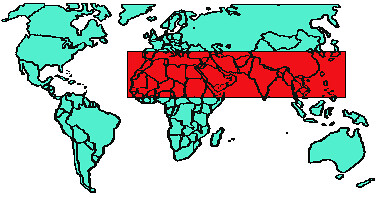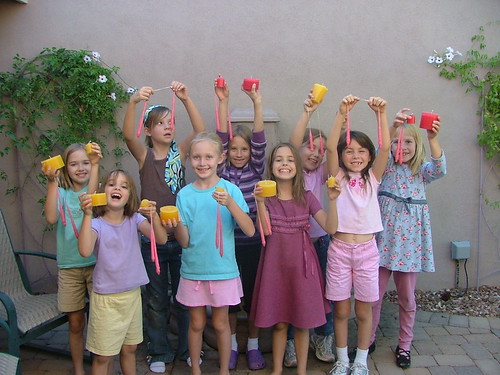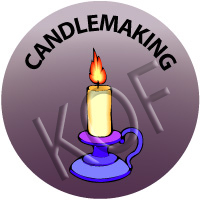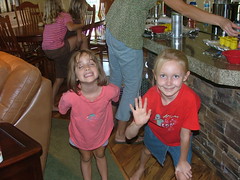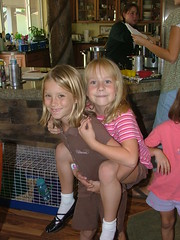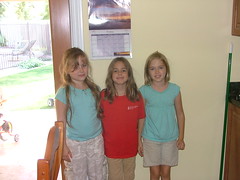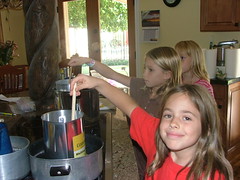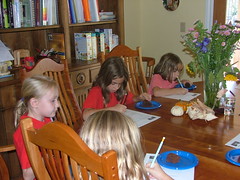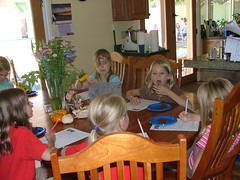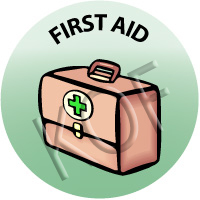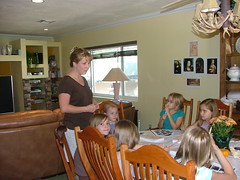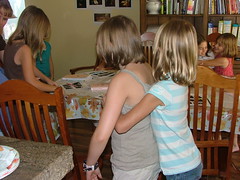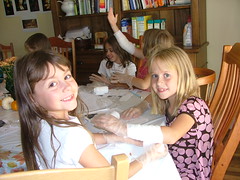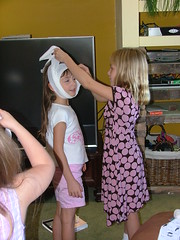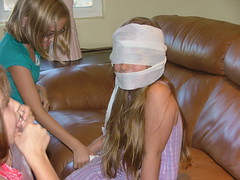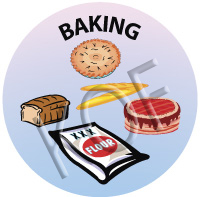
Today’s meeting was on baking. We started the meeting going over our Verse, Prayer and song. I challenged the girls to have them all memorized by our next meeting, January 18th.
After our opening we talked about baking. We talked about how it makes us feel when we smell something baking in the oven and how it makes other people feel when we share fresh baked goods with them.
I handed out the aprons I made for the girls for Christmas presents, they put them on and we started baking!
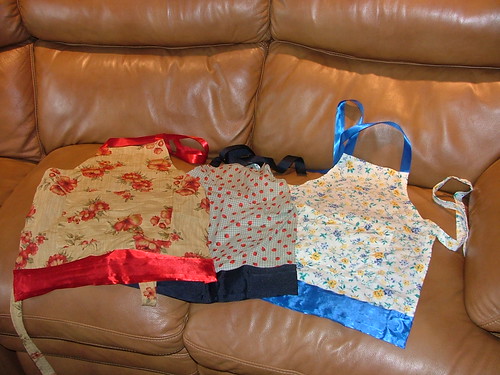
Two girls volunteered to demonstrate some treats for us today. First up, were yummy brownies!
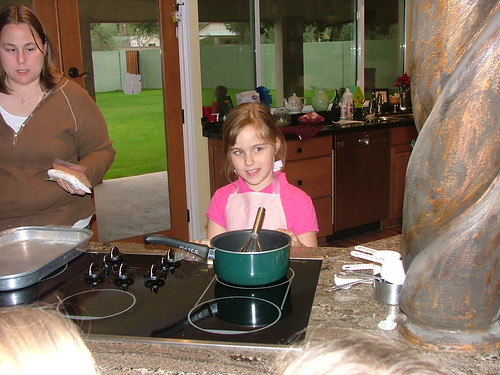
First the ingredients were listed, then the demonstration began.

The girls asked questions throughout the demonstration.

While the brownies baked, our next volunteer began her demonstration of Toll House Cookies.
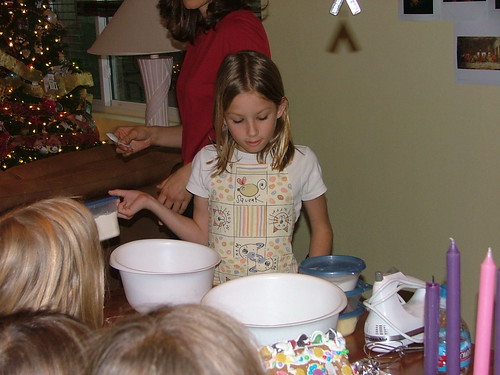
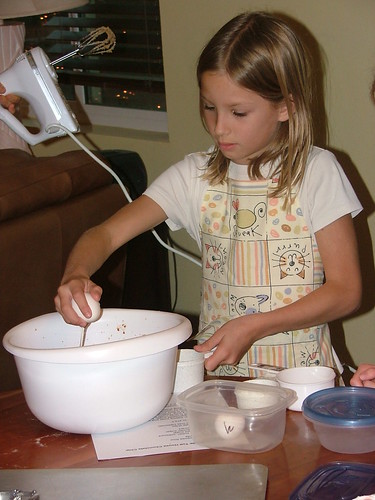
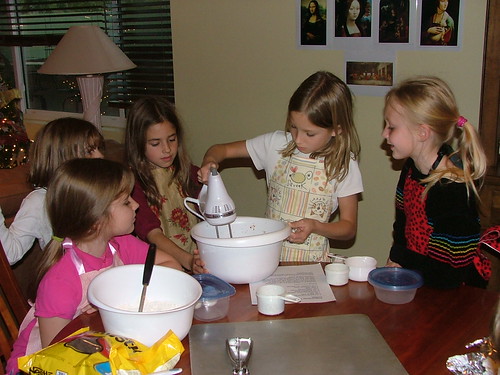
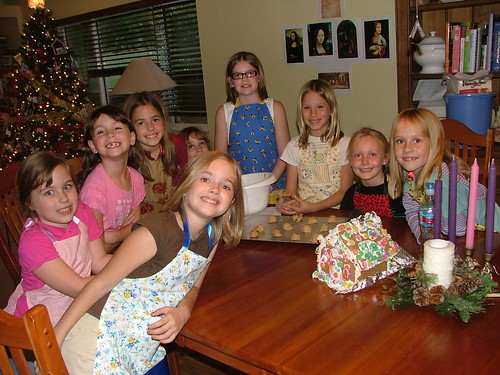
Anxiously awaiting the cookies!
The brownies came out of the oven in time for the cookies to be popped in.
While the brownies cooled and the cookies baked, we got busy making our mixes for the girls to bring home. Every girl got a quart size canning jar and we layered the ingredients for Chocolate Cranberry Cookies. Everything fit, except the flour, baking soda, baking powder mixture, so I handed out ziplock bags for the girls to dump the flour mixture into to take home.


The girls had fun scooping and measuring and making a mess all over the kitchen table. LOL
After assembling the jars, the girls sat down and enjoyed the yummy brownies and cookies that had just finished cooking. Yum.
To complete the Baking badge the girls need to:
- Read each recipe and follow the instructions. All of the chosen recipes must be from "scratch" only. From "scratch" means no store bought box mixes allowed. Cleanthe kitchen completely after each baking session. Bake each of the itmes below. Have your parent sign when each item is completed.
- cake
- cobbler
- cookies
- pie
- yeast bread
- Dessert bread
- Start a recipe collection. These recipes can be on 3×5 index cards and placed in a card file, or can be written on notebook paper and placed in a binder. A 3-ring binder is better than a spiral notebook for recipes because recipes can easily be inserted, sorted or removed as needed."…It is written, that man shall not live by bread alone, but by every word of God." Luke 4:4


